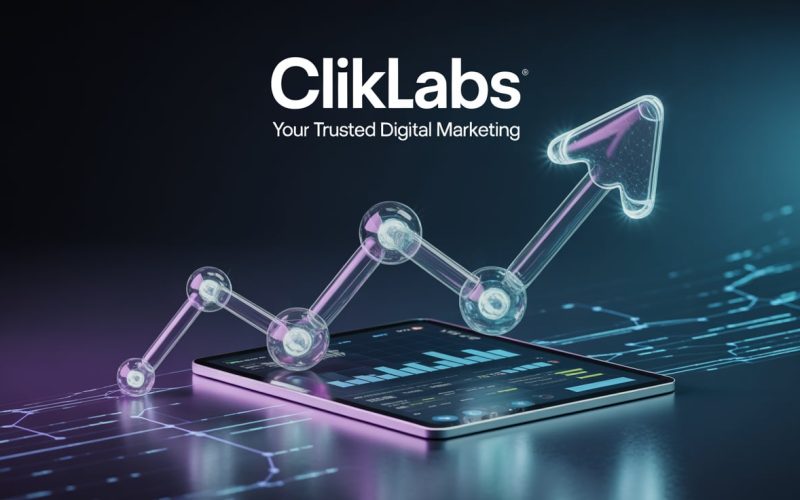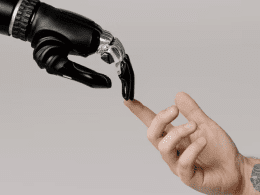In the modern digital landscape, user experience (UX) isn’t just a buzzword—it’s the backbone of successful e-commerce. With so many options at their fingertips, online shoppers today won’t tolerate friction. If your website doesn’t offer a smooth, intuitive, and emotionally satisfying experience, they’ll bounce—straight into the arms of a competitor.
At ClikLabs, we’ve helped countless businesses turn underperforming online stores into high-converting sales engines through smart UX design. In this guide, we’ll explain why e-commerce UX matters more than ever in 2025, and how you can start implementing changes today that will boost engagement, reduce cart abandonment, and increase revenue.
What is E-commerce UX—and Why Should You Care?
E-commerce UX refers to the overall experience a user has when interacting with an online store—from the homepage all the way to the confirmation page. It’s not just about how your website looks; it’s about how easily customers can find what they’re looking for, make purchasing decisions, and complete transactions.
Think about your own online shopping habits. How many times have you left a website because the layout was confusing, the pages loaded too slowly, or the checkout process was frustrating? That’s the power of UX—for better or worse.
According to studies, every $1 invested in UX brings an average return of $100. That’s a 9,900% ROI. Simply put: if you’re not prioritizing UX, you’re leaving serious money on the table.
The Business Impact of Great UX
Investing in user experience does more than just make your site look nice. It has tangible business benefits, including:
-
Higher conversion rates
-
Lower bounce rates
-
Increased average order value (AOV)
-
Greater customer loyalty
-
Better reviews and word-of-mouth referrals
On the flip side, poor UX leads to abandoned carts, lost sales, negative impressions, and a damaged brand reputation.
How Consumer Expectations Are Evolving in 2025
Online shoppers today are savvier and more impatient than ever. Influenced by seamless experiences on platforms like Amazon, Apple, and Shopify, consumers now expect:
-
Lightning-fast page loads
-
Clean, modern design
-
Personalization based on browsing history
-
Clear product information
-
Seamless checkout experiences across devices
If your site doesn’t meet these standards, you’re already falling behind.
7 Proven UX Strategies to Increase Conversions
1. Simplify Your Navigation
Your navigation is the roadmap of your online store. Confusing or cluttered menus can frustrate users and lead to early exits. Use:
-
Logical product categories
-
Sticky navigation menus
-
Breadcrumbs for easy backtracking
-
A powerful search bar with autocomplete
When users can find what they’re looking for in just a few clicks, they’re far more likely to convert.
2. Optimize Your Checkout Flow
The checkout process is the final step—and one of the most common places where conversions die. Streamline it with:
-
Guest checkout options
-
One-page checkout forms
-
Progress indicators
-
Autofill for address and payment fields
-
Multiple payment methods (PayPal, Apple Pay, Google Pay)
The fewer clicks it takes to complete a purchase, the better.
3. Design for Mobile First
With over 60% of e-commerce traffic coming from mobile, responsive design is no longer optional. Make sure your site:
-
Adapts to all screen sizes
-
Uses large, tappable buttons
-
Loads quickly on 4G/5G connections
-
Offers mobile-friendly checkout options
At Clik Labs, we always start with mobile in mind—because that’s where your customers are.
4. Use High-Quality Visuals
Product photos are your online storefront. Invest in:
-
Multiple angles and zoom functionality
-
360-degree product views
-
Short demo videos
-
Lifestyle images that show the product in use
The more confident users feel about a product, the more likely they are to buy it.
5. Build Trust with Transparency
Today’s shoppers are skeptical. Earn their trust with:
-
Clear return and shipping policies
-
Prominently displayed customer support options
-
Trust badges and secure payment icons
-
Verified reviews and user-generated content
Social proof is one of the most powerful psychological triggers for purchase decisions.
6. Personalize the Shopping Experience
People love feeling like the site “knows” them. Use tools that offer:
-
Product recommendations based on past behavior
-
Recently viewed item reminders
-
“Customers also bought” suggestions
-
Smart upselling and cross-selling
These techniques not only increase AOV but also create a more engaging and enjoyable shopping experience.
7. Keep the Design Simple and Intuitive
Cluttered pages confuse users. Stick to a clean layout with:
-
Plenty of white space
-
Clear CTAs (Calls to Action)
-
Consistent branding
-
Easy-to-read fonts and appropriate color contrast
Simple design helps users focus on what matters—your products.
Common E-commerce UX Mistakes to Avoid
Even small mistakes can have big consequences. Avoid:
-
Overly complex or hidden menus
-
Slow loading pages
-
Inconsistent branding across devices
-
Pop-ups that interrupt the user journey
-
Missing or unclear return policies
-
Unresponsive mobile pages
A great UX is not just about adding features—it’s also about removing friction.
Tools to Measure and Improve Your UX
You can’t improve what you don’t measure. Here are some essential tools:
-
Hotjar – Heatmaps and session recordings
-
Crazy Egg – Visual user behavior tracking
-
Google Analytics – Bounce rate, page speed, conversion tracking
-
Optimizely – A/B testing different layouts, buttons, and flows
-
User feedback surveys – Direct input from real shoppers
Regular audits and user testing should be part of your ongoing UX strategy.
Real-World Results: What Happens When You Prioritize UX
At Clik Labs, we’ve seen first-hand how UX investments pay off. One of our recent clients experienced:
-
A 43% increase in conversions after redesigning their mobile checkout
-
A 29% drop in cart abandonment with simplified navigation
-
A 2x increase in average session time after improving product discovery
These aren’t isolated wins—they’re the result of data-driven UX design focused on what users actually want.
Final Thoughts: Your Website Is More Than a Store—It’s an Experience
E-commerce success in 2025 is no longer just about selling great products. It’s about creating great experiences. When your site is easy to use, visually appealing, and designed with your customers in mind, you’re not just closing sales—you’re building loyalty.
Don’t let poor UX cost you business. Whether you’re a new store owner or an established brand looking to scale, now is the time to invest in better design, smarter navigation, and seamless user flows.
Ready to take your e-commerce UX to the next level?
Partner with Clik Labs to create a beautiful, conversion-focused online store that your customers will love—and keep coming back to.












